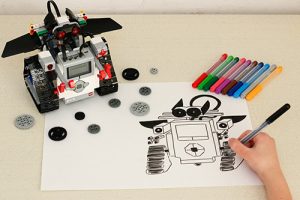 This week I would like to start a conversation about the merits of working remotely versus colocation. IBM announced in January that all North American marketing employees will be called into one of six offices around the country, thus ending remote work for that department. This follows other IBM departments that recently called in the troops. Yahoo’s Marissa Mayer made a similar move for all employees in 2013 and she was not the first to reverse the trend toward remote work.
This week I would like to start a conversation about the merits of working remotely versus colocation. IBM announced in January that all North American marketing employees will be called into one of six offices around the country, thus ending remote work for that department. This follows other IBM departments that recently called in the troops. Yahoo’s Marissa Mayer made a similar move for all employees in 2013 and she was not the first to reverse the trend toward remote work.
My question is this: does colocation make sense in a global workforce, or does innovation flourish when workers are sitting shoulder to shoulder discussing the next breakthrough product or process?
History of Telework
As early as the 1600s, some people were acting as independent contractors by receiving raw materials and producing finished product, all from their home. This was most prevalent in fields such as ironwork or sewing. Often, members of the family would help. Thus was born what we know as the cottage industry and also the first remote workers.
In subsequent years, non-farming jobs moved primarily to cities where factories powered by a growing workforce turned out an array of goods. Offices soon followed, where knowledge workers specializing in accounting or marketing or programming worked. Having everyone together helped with communications and coordination of a large group of people.
With the oil crisis of the 1970s and high gas prices, employers and researchers started to look for ways to keep some employees at home and productive. Improved telecommunications and computing allowed more people to work from home or remote locations. The Clean Air Act of 1990 only accelerated the need to reduce commuting and increase telework. AT&T celebrated the first Telecommuting Day on September 20, 1994 which is befitting of the telecommunication giant. Telework picked up in the 1990s and grew, but by the time Yahoo called back their remote employees in 2013 the pendulum had begun to shift the other way.
A Case for Colocation
The pitch for everyone located in the same office or a limited series of offices has mostly to do with innovation. The argument is that teams can be more innovative when everyone can physically see their coworkers and spontaneous conversations ensue. There is some evidence that this is true. Google encourages employees to come into the office through perks such as transportation via the GBus and free meals on campus. They believe that dining with fellow Googlers will spur innovation. They can meet with other teams around the country and the globe via teleconferencing when necessary, thus promoting their green agenda.
The Argument
I have telecommuted in the past when working with global teams. I had days that opened with phone calls to Europe at 6:00 a.m. and ended with 6:00 p.m. calls to Asia. It was convenient and efficient to work from home. It was also much more efficient than traveling around the globe, although there were times when that was necessary.
I can see the argument for having teams in a central office, but the transition may mean moving families or leaving jobs if a move is not feasible. It also means more commuters clogging roads and more time spent in traffic. Perhaps the self-driving car equipped with wi-fi will be the answer. In the meantime, I think organizations should proceed with caution as they call workers back into the office. They may be trading efficiency for innovation.
Thoughts
Let me know your thoughts on this subject. Are you a telecommuter, and does it work for you? Do you find that you work less or more than if you commuted to an office every day? Do you miss the personal interaction with a physical work team? Perhaps together we can come up with the ideal solution.
Kelly Brown is an IT professional and assistant professor of practice for the UO Applied Information Management Master’s Degree Program. He writes about IT and business topics that keep him up at night.










